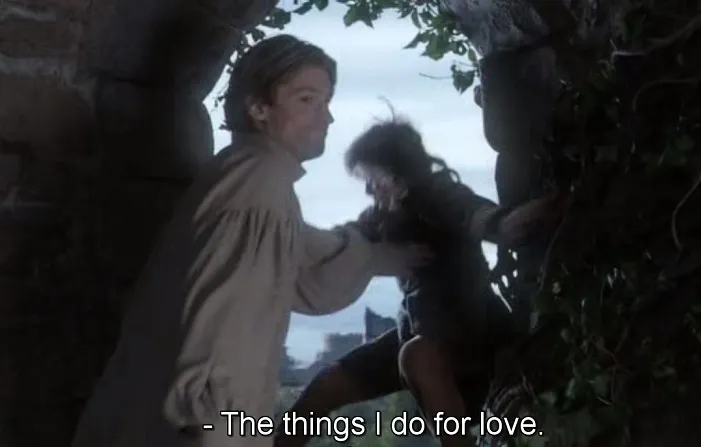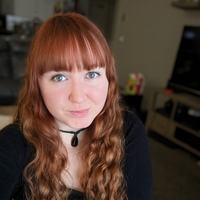How to Write a Dynamic Villain That’s Not a Boring Cliché
Bella Rose Emmorey
book editor, rogue behaviorist, digital marketer, writer, brand builder, plant aunt, and cheese enthusiast.
Learning how to write a dynamic villain nowadays isn’t all that easy. There are so many people online putting in their two cents as to how to build a villain. But mostly, they’re just telling you what they prefer in a villain.
And by "villain" in this post, we’re talking about an antagonist who is bad, or considered "bad" in whatever world and plot you’ve constructed.
A villain is different from an antagonist who is just acting counter to your protagonist.
Keep that in mind, and dive in for all things dynamic villains.
Why do you even want a dynamic villain?
The villain of your story is the driving force working against your protagonist. Without a good villain, you don’t have good conflict. And at the root of good, entertaining writing, is quality conflict the readers want to see through to the end.
Conflict is the entertaining part of a story in general. If your villain is flat or predictable, the reader won’t feel like the book is interesting. You’ll end up with feedback like, "I knew what was coming," or "The villain was kind of boring," or even, "I don’t get it. The villain doesn’t make sense."
Dynamic villains create the stakes and conflicts that make your story interesting.
How to Write a Dynamic Villain Your Readers Will be Addicted to Hating
We love to hate the baddies, but only if they’re not a caricature of what the "bad guy" is supposed to be. Avoid that by doing this instead:
1. Build them based on the MC’s weaknesses
The best thing about making up your own characters is that you can craft who they are to be terrible for one another. Which means the ways your villain is awful can be even worse if that hits a nerve for your main character in particular.
Create your dynamic villain to feel like they’re specifically suited to make your protagonist’s life difficult. Just make sure that you ride the line that doesn’t make it too obvious.
One (very basic) example might be crafting a villain who only operates in the dark due to the type of creature they are. Then, make your MC afraid of the dark for reasons that make it a legitimate fear and not something that’s just convenient for the story.
2. Make them a rounded character
We don’t want cardboard cut-out characters. They have to feel "real", and by that, we always mean you have to make them complex with various interests, habits, strengths, and weaknesses.
Even wildly evil villains have more to offer than just that.
Take Cersei in Game of Thrones, for example. Yes, she is a piece of garbage, but she’s a piece of garbage who has fears and tears and who we sort of end up feeling bad for at different points in the story. Why is that?
It’s because we understand that she’s more than just evil. She has reasons for doing what she’s doing—more on that when we get to motivations below.
Here are a few questions you can answer to make your dynamic villain more round:
- What are they afraid of?
- How do they relax?
- Do they have close friends?
- What hobbies do they enjoy? (bonus points if this is very unexpected)
- Where do they place their value in themselves?
- Where do they place value in others?
- What would they be doing if not villainizing the plot in your book?
- Are they an animal lover?
- Do they hold any superstitions?
- Are they spiritual or religious?
3. Avoid exaggerated qualities
At this point, it’s easy to get ahead on making a villain who’s just mean, but we want to avoid exaggerating qualities too much. While the level of this might depend on your audience, you don’t want to make a cartoonish villain.
These would be villains crafted to be one-note, flat, and really obvious that they’re the bad guy. Generally, the younger your audience, the more exaggerated you can make a villain.
Adult readers will want a character who feels real and not evil for the sake of evil. Children will need more "clues" that a character is bad, which is often where you’ll see ugly villains with scars or deformities or other "evil" appearances.

Robbie Rotten from Lazy Town
4. Show their flaws and weaknesses
A villain who is undefeatable is not dynamic. If you want to learn how to write a dynamic villain, you should on their flaws. And no, the fact that they’re "bad" isn’t a flaw.
Flaws in any character are something that is really hard to change or grow in, which is separate from a weakness. Cersei’s weakness is the need to protect her family. She’ll do anything—even endangering innocents and angering those with power to take her down.
Her flaws, however, have more to do with personality traits, like her impulsiveness.
Weaknesses can technically be overcome. Flaws tend to stick around and cause the most trouble.
Your villain’s weaknesses will be tested by the main character. Their flaws will be exploited by the MC and lead to their downfall.
5. Create a strong motivation
The reason your villain is the villain is vital. Their motive creates much of the momentum within your plot.
And no, "world domination" is not a strong motive. When you answer the question of "what do they want?" it has to go deep. It has to touch a powerful place in the character’s life—and in human life.
If a villain’s motives aren’t believable, they won’t create the tension you want in your story. The reader has to believe that this villain will go to any and all lengths to accomplish their goal because they have a strong motive.
Here are a few things to think through when learning how to write a dynamic villain and craft their motive:
- What’s their end goal?
- Where did that goal come from?
- What are they willing to lose to accomplish it?
- Why do they want that goal—what will it give them when they reach it?
- Why do they want that?
- Why do they want that?
Keep asking the "why" until you understand the root of this character’s motivation.
6. Showcase their "evil"
Your reader needs to believe that this character is bad. You have to show scenes of their terrible behavior in the story for us to understand that they’re not messing around. They’re willing to go to extreme lengths.
Let’s take Cersei again, because she’s a well-crafted dynamic villain.
In the very first episode (or book, whichever), we see her going at it with her brother. Which is gross, but not "evil"...yet. But then poor young Bran sees them and, despite the fact that he probably doesn’t understand these dynamics, they choose to take care of this problem…by shoving him off a wall.
While Cersei herself doesn’t take this action, she is still a reason for it. And, more importantly, she is the reason Jaime does it, saying, "The things I do for love." Which also goes to show that Cersei’s motivation to commit such crimes has to do with those she loves—her family.

They don’t succeed in killing him, but we quickly see that Cersei thinks the solution should have been more severe, as Jaime’s method was "messy". This is very clear and early evidence that Cersei (and her brother) are not good people.
This is the same idea as is popular in the "Save the Cat" storytelling method. You show who is good by writing a scene where the hero saves the cat. You show who’s the villain by having them "kick the dog".
Learning how to write a dynamic villain mostly just takes time and treating your antagonist like a main character in your story. Do just as much work developing them as you do your other main characters, even if they don’t have a point of view. That work will pay off!
Like what you're reading?
Join other authors like you in NovelPad’s free writing community!
Join the communitySimilar Posts
What File Formats are Accepted by Kindle Direct Publishing?
File types for ebooks, paperbacks, and hardbacks on Amazon's KDP.
Ollie Ander
Is probably just a couple cats in a trench-coat—the hair shedding and sunlight napping are highly suspect.
When is the best time to publish a romance novel?
What is the best month and day of the week to publish a romance? Do romance novelists make money?
Rina Fontes Malka
A writer with too many ideas and not enough time.
What is a romance subgenre?
How to use subgenres in romance novels.
S.R. Beaston
Crafty with words, wit, and wisdom, just add caffeine to make it more interesting.
What is a ghazal? The essence of emotion in poetry
Definition, examples, and history of the ghazal poem.
Hannah Lee Kidder
NovelPad Author
When is the best time to publish a horror novel? [Peak Sales Method]
Make the most of your horror book launch by strategizing with these tips.
Bella Rose Emmorey
book editor, rogue behaviorist, digital marketer, writer, brand builder, plant aunt, and cheese enthusiast.
How To Write Strong Atmosphere In Stories
7 best tips for creating strong atmosphere in your writing.
Hannah Lee Kidder
NovelPad Author